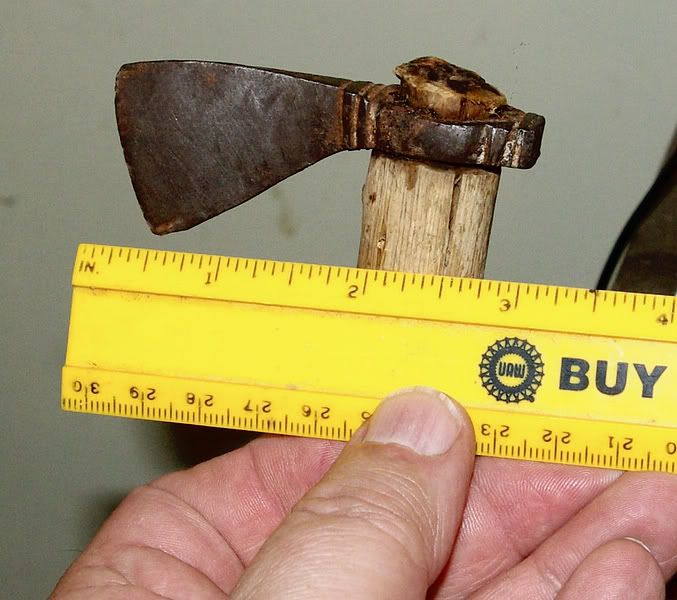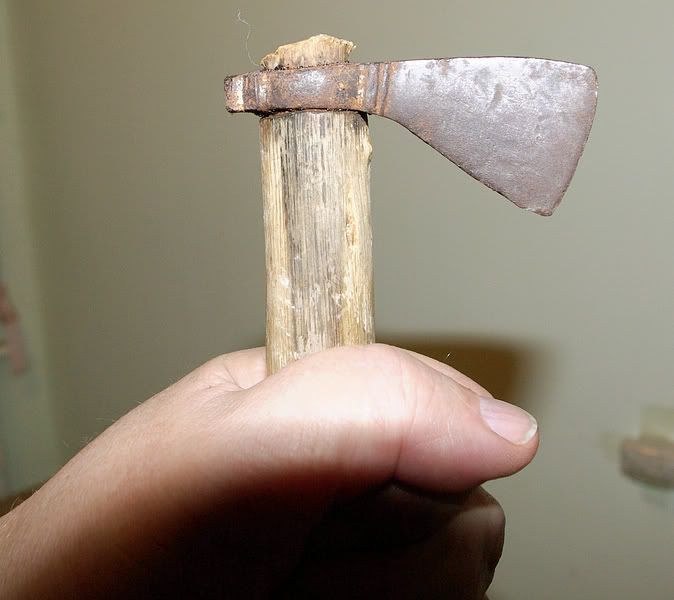Quote:
|
Originally Posted by kronckew
arrived today, the haft is just under an inch in dia., and 34.5 in. long. it is of some whiteish wood, with small branch nodes spiralling down the shaft in a fibonnaci style sequence. bottom end is consistant with it being used as a walking stick.
the steel head is just under 2.9 in. from the poll to the edge at the top. thickness of the blade is almost a half inch near the eye, down to about 0.1 in. near the edge. would this be consistant with a peninsular arab axe as has been suggested?
there are some active rusty areas that i'll clean lightly and a nice dark patina overall. the 'bare' but patinated metal areas have a crystalline appearance. there are decorative lines forged in at the poll and blade sides of the eye. six forged flat-head brads/nails arranged in a rough hexagon are driven in the head end as wedges, one in the visible split. the head is on firm and unmoving. the edge is thin but not overly sharp, there are forging or strike marks on the blade.
all in all it reminds me more of my more recent hungarian fokos/polish ciupaga defense axes. it's just the right length & weight for a walking stick and the axe head makes a good hand grip. anyway i like it 

 |
Salaams all...Whilst doing some damage control I happened upon this thread which is answered by Ward at #4 correctly ... This is, on first inspection, a Mussandam Jers axe not a Persian saddle axe ( Persian Saddle Axes illustrated in Anthony North Islamic Arms and Armour)( see Sikh soldier
Nice Indo Persian Axe # 25 by Atlantia for reference) which has a totally different size and shape etc. It appears to be from Omani Mussandam Peninsula.
Another almost identical shape exists in the Omani Wahiba sands but without decoration called a Quddum. This one is probably a Mussandam Jers..from the Shehu tribe. You can see the incised geometric decorations either side of the head more typical of Mussandam ... I have to say however that this is very close in style to the Quddum and appears as all Quddum do to have a shaft roughly fitted by the owner unlike the Mussandam which are made complete by the local manufacturer ... It appears to be a Mussandam axehead fitted to a Wahiba Sands shaft. See Richardson and Dorr~ Craft Herritage of Oman ~ Axes.

Regards Ibrahiim al Balooshi.